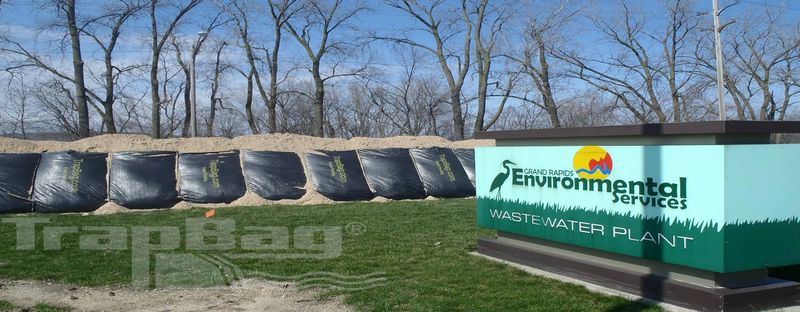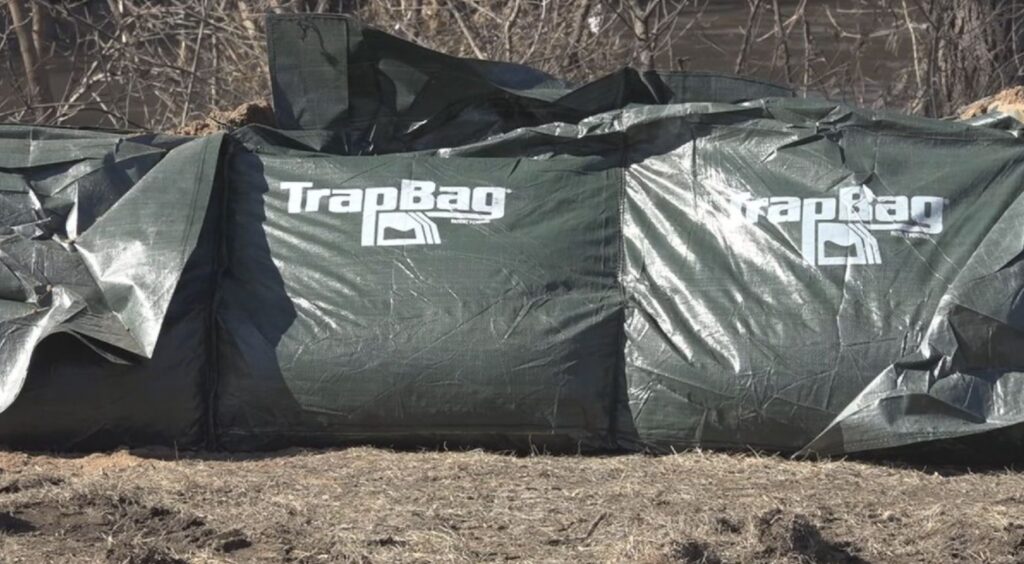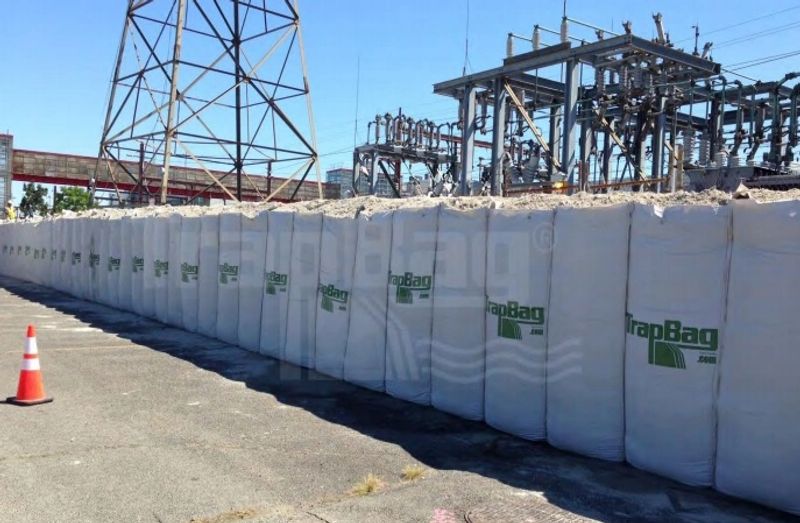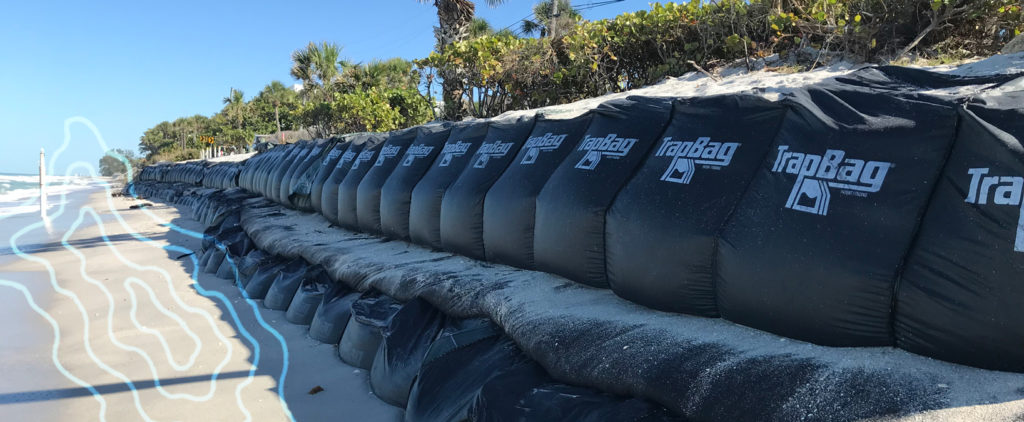TrapBag Solutions for Civil Engineering Challenges
TrapBag is an ideal temporary or permanent flood protection infrastructure solution civil engineers can use for a variety of purposes. They’re the perfect choice for everything from aquatic construction to stormwater detention.
Here are some of the ways civil engineering firms rely on TrapBag for their most critical projects.
Flood Control
Whether on land-based projects or aquatic infrastructure like dams or levees, flooding can be disastrous for construction. TrapBag can be used as a temporary dam, dike, levee, or seawall to protect new or existing infrastructure from flood damage during construction or severe weather events.
Civil engineering projects also must adhere to strict stormwater management regulations. TrapBag can be used to create temporary or permanent stormwater detention ponds that keep construction runoff out of sanitary sewers and water supplies.
Learn More »Infrastructure Protection
Whether you need to protect a riverside road from being washed away during periods of severe flooding or reinforce dams and levees along lakeshores, TrapBag can get the job done. Protecting infrastructure is hugely important and can prevent costly damage. When every minute counts, TrapBag can strengthen vulnerable infrastructure to save time, money, and disruptions to daily life.
Learn More »Erosion Control
Flooding, landslides, and even just persistent heavy rain can exacerbate the effects of erosion, especially as climate change causes more and more issues. As a rapid-deploy solution, TrapBag barriers are a cost-effective way to reinforce shorelines, riverbanks, and lakeshores to keep erosion in check. They can also be used to stabilize sand dunes, which in turn protects infrastructure and vulnerable residential areas.
Learn More »Civil Engineering Solutions to Climate Change
TrapBag was originally designed as a flood barrier that could withstand hurricane-force storm surges to protect lives and property. Since then, civil engineers have trusted it for its ability to reinforce infrastructure and protect the structures they design from erosion or flooding. A few reasons why they’ve become such a staple for flood and erosion control in civil engineering projects include:
-
Easier to fill/less labor: It can take days for a team of people to build an adequate sandbag barrier for civil engineering projects in flood-prone areas. However, a team of two people and a third person operating skid steer or other heavy equipment can assemble a TrapBag barrier within a few hours using sand, washed gravel, or concrete.
-
More durable: Traditional sandbag barriers have a higher margin of error during the building process, which makes them more prone to collapsing. However, TrapBag barriers can hold back thousands of gallons of water and withstand the forces of nature on any civil infrastructure project. They can also help prevent damage from the impacts of climate change.
-
Uses less material: Compared to a similarly sized, 100-foot wall of stacked sandbags, a TrapBag barrier uses 40% less fill material with more durable results that can withstand thousands of pounds of water pressure. A single 100-foot section of 4-foot tall TrapBags replaces roughly 8,000 sandbags.
Why Choose TrapBags as Flood Prevention Barriers?
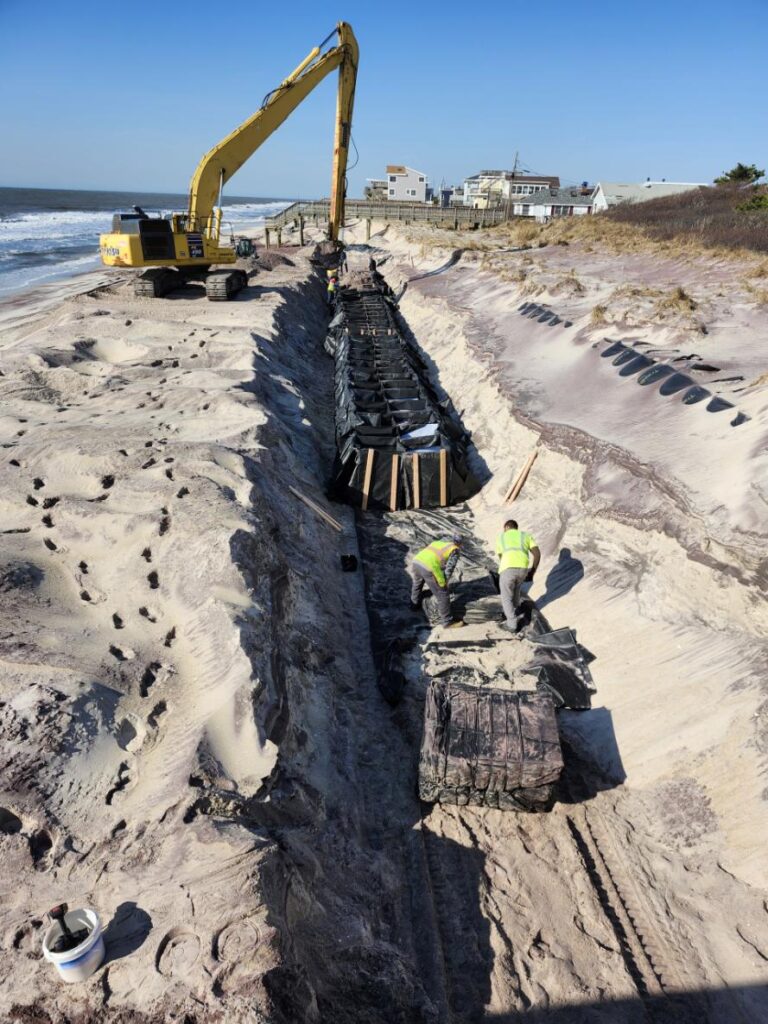
-

Versatility
Although TrapBag was originally designed as a flood bag with an improved design, civil engineers can use it to reinforce everything from municipal retaining walls to stormwater detention ponds and cofferdams on bridge or culvert construction projects. No matter the project requirements, TrapBag is just as good at keeping water out as it is at keeping water in.
-

Speed
Compared to traditional flood control solutions like sandbag barriers, TrapBag can be deployed in a fraction of the time with the same—and often better—results. A crew of three people and a skid steer or excavator can assemble a full TrapBag barrier in a matter of hours when every second counts.
-

Reliability
The U.S. Army Corps of Engineers has successfully tested TrapBag for its ability to protect structures from catastrophic flood damage. This makes TrapBag barriers an ideal solution for flood control because it proves they aren’t compromised as easily as other types of barriers during worst-case scenarios.
TrapBag provides a 3:1 (mass to hydraulic load) safety factor that allows it to act as a climate-resilient solution for civil engineering projects. It can handle practically any water protection or detention requirements for your civil engineering needs.
-
TrapBag® is more than a barrier—it’s an engineered solution built for the demands of modern civil projects. From controlling stormwater to stabilizing shorelines and protecting infrastructure, TrapBag delivers proven performance with speed, efficiency, and cost savings. Tested by the U.S. Army Corps of Engineers and trusted across the country, our system is designed to help engineers solve complex site challenges without overcomplicating the build. If you’re looking for a durable, flexible, and field-tested tool to strengthen your next project, connect with us today to explore how TrapBag can fit into your design.

